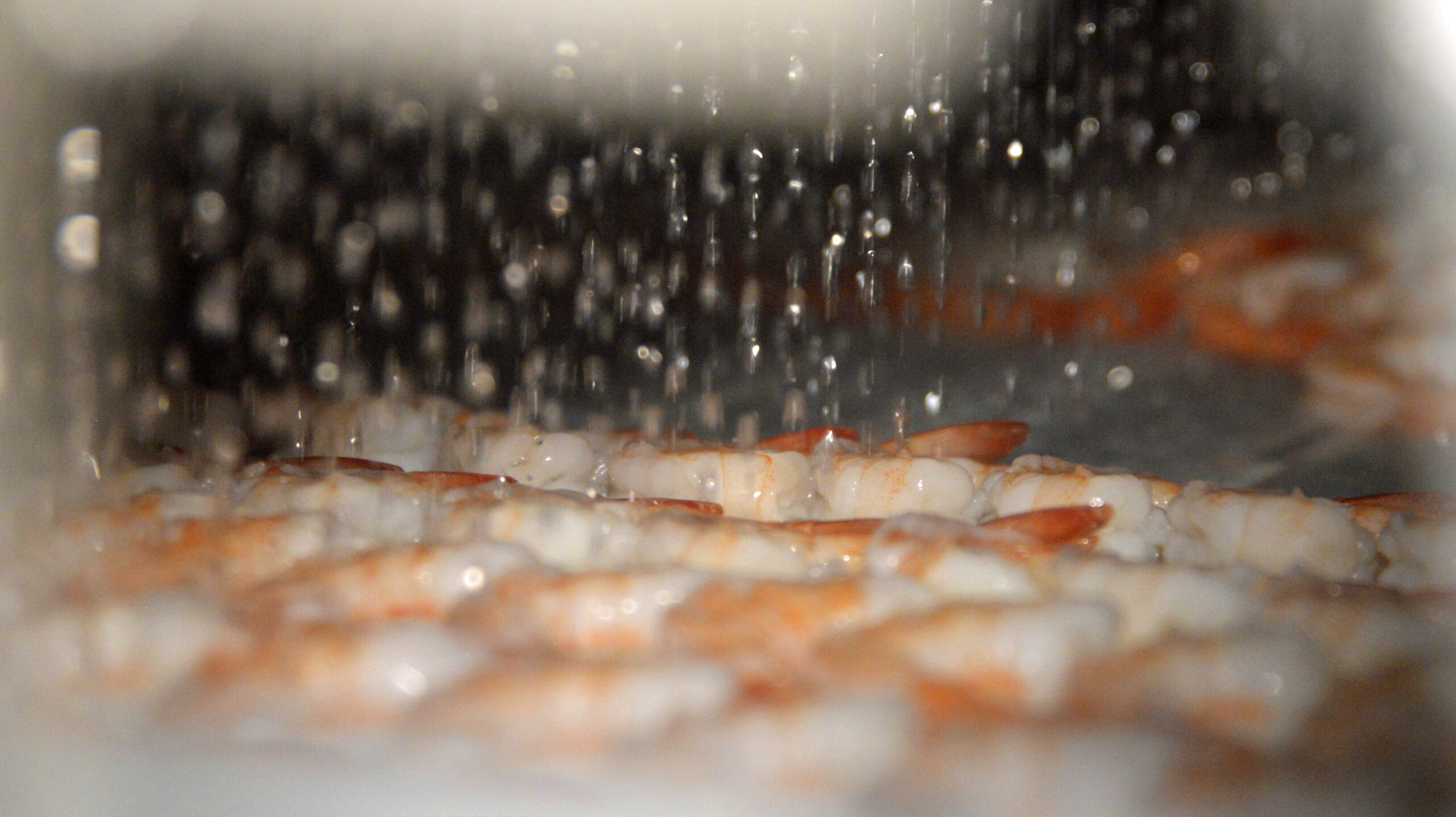Discover how impingement technology disrupts thermal barriers to speed up cooking, chilling, and freezing in food processing, thereby enhancing efficiency and product quality.
How Impingement Aids Faster Heat Transfer in Food Processing
In industrial food processing, thermal efficiency is not just a matter of performance, it’s a competitive edge. As processors face growing demands for speed, energy efficiency, and consistent quality, traditional heat transfer methods often fall short. A critical obstacle? The static boundary layer of air that naturally forms around each product. This is where impingement technology delivers a breakthrough.Understanding the Boundary Layer Challenge
In thermodynamics, when a product—such as shrimp, vegetables, or pasta—is exposed to a heating or cooling medium (air or water), a thin film of static air forms on its surface. This “boundary layer” acts as an insulator, creating resistance between the product and the medium, thereby slowing heat exchange. In conventional equipment, this layer significantly limits the rate of heat transfer, leading to longer processing times, inconsistent cooking or chilling, and higher energy consumption.Achieving Faster Heat Transer Through Impingement
Impingement refers to a high-velocity fluid (typically air or water) striking directly onto a product’s surface. OctoFrost’s Impingement Flash Technology uses a high-pressure rainshower system that delivers water droplets at a controlled, even flow across the product bed inside an IF Chiller, IF Cooker or IF Blancher.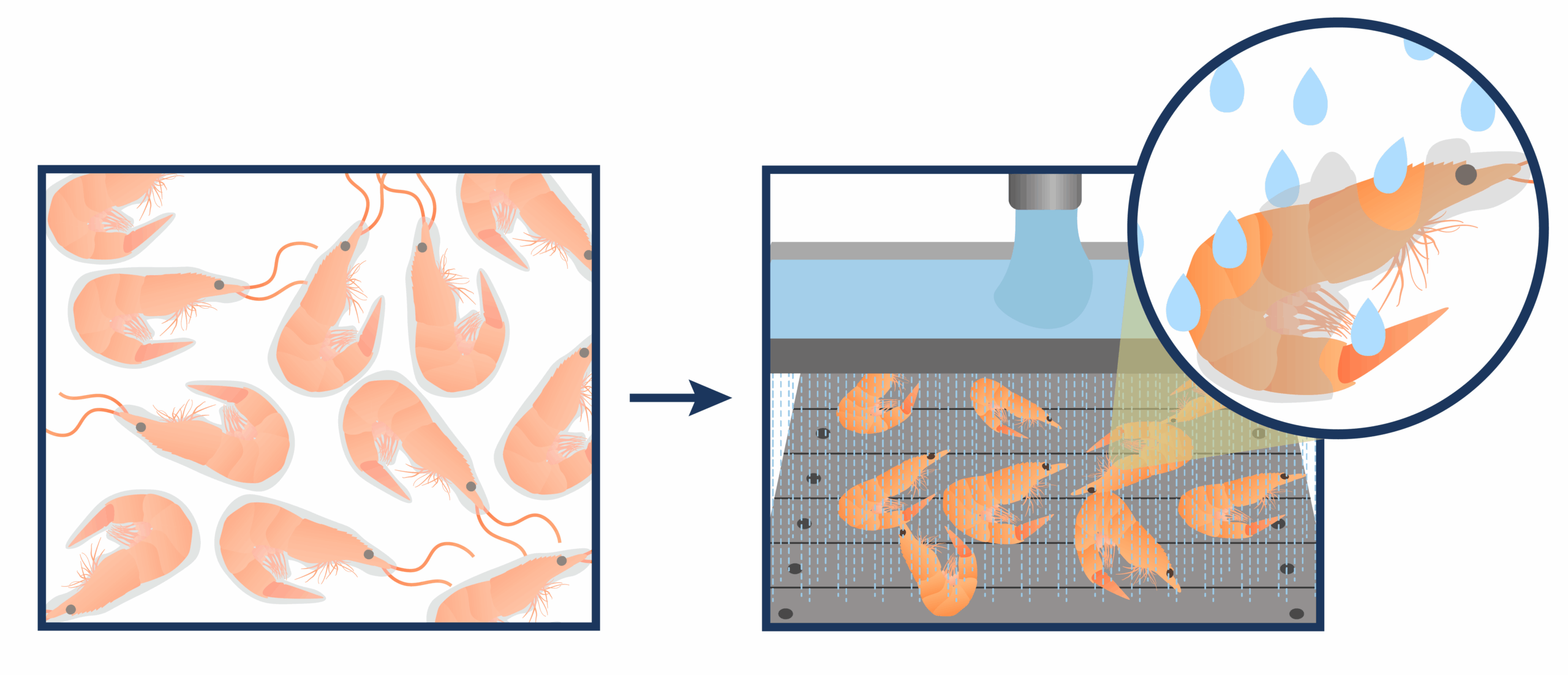
This action performs two critical functions:
• Breaks the boundary layer: The force of the rainshower disrupts the insulation film of air surrounding each item.
• Enhances surface contact: With the boundary layer removed, heat transfer occurs via direct contact conduction, which is significantly faster and more uniform.
Utilizing Impingement in OctoFrost Equipment
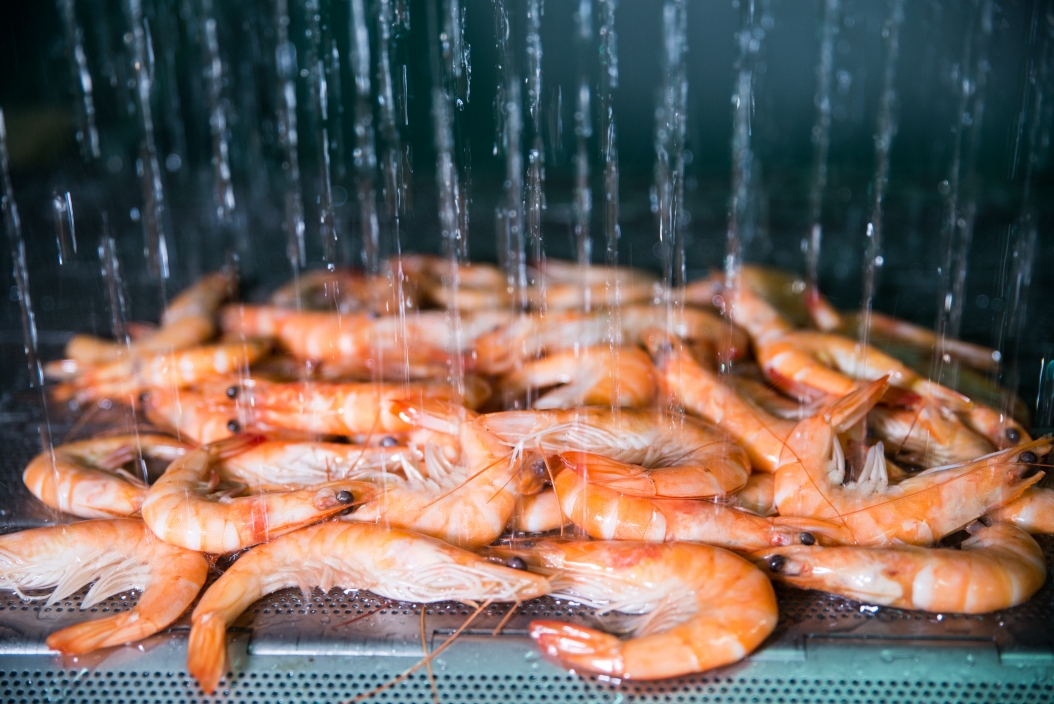
IF Cooker
Application: Cooking shrimp
Impingement Medium: Water
Result: Shorter cooking times with better texture retention and yield
IF Blancher
Application: Vegetables, fruits
Impingement Medium: Water
Result: Uniform blanching with minimized thermal degradation
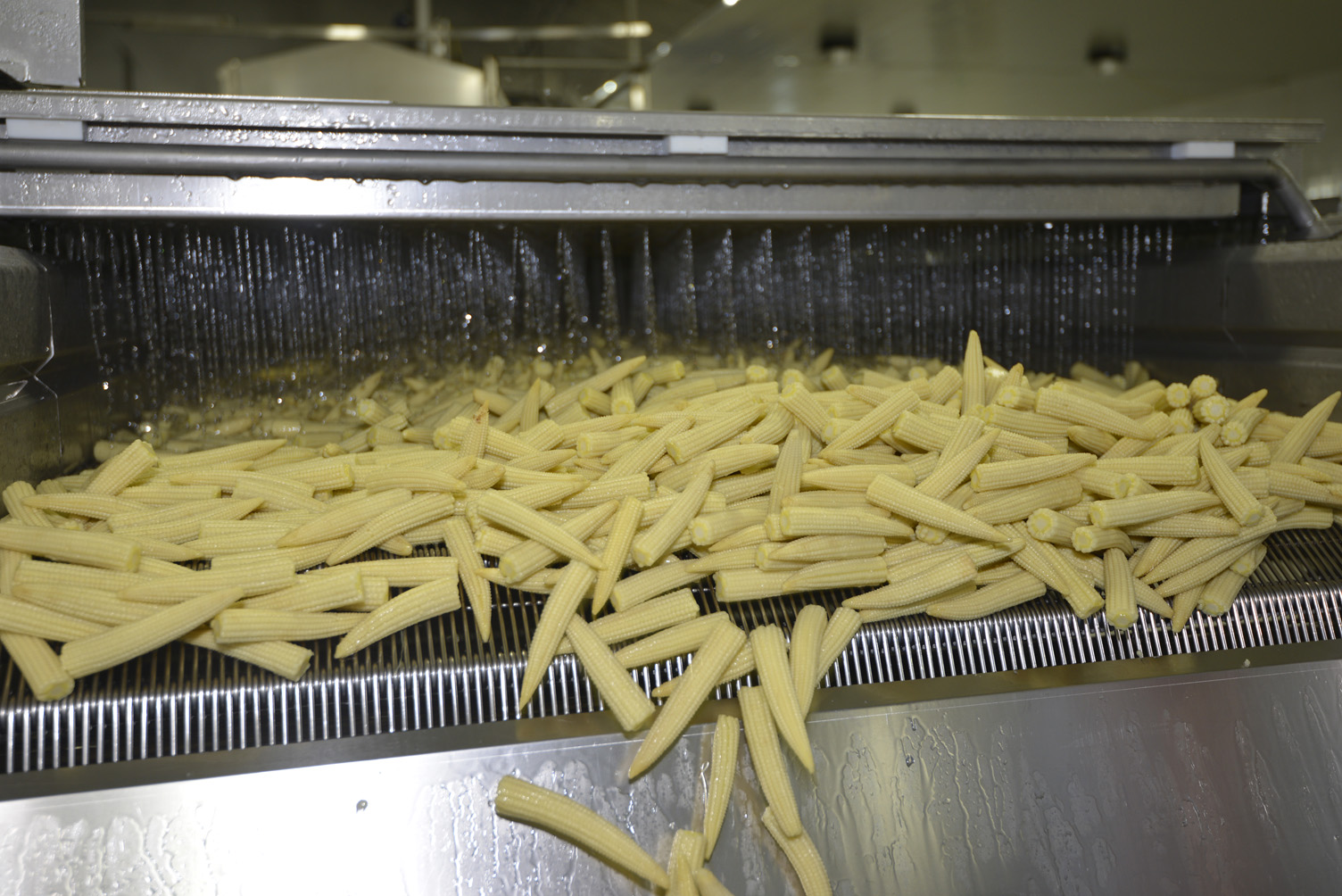
IF Chiller
Application: Vegetables, fruits, berries, shrimp, pasta, grains, rice
Impingement Medium: Recirculated chilled water through rainshower system
Result: Product temperature under 5 °C in a short time without quality loss
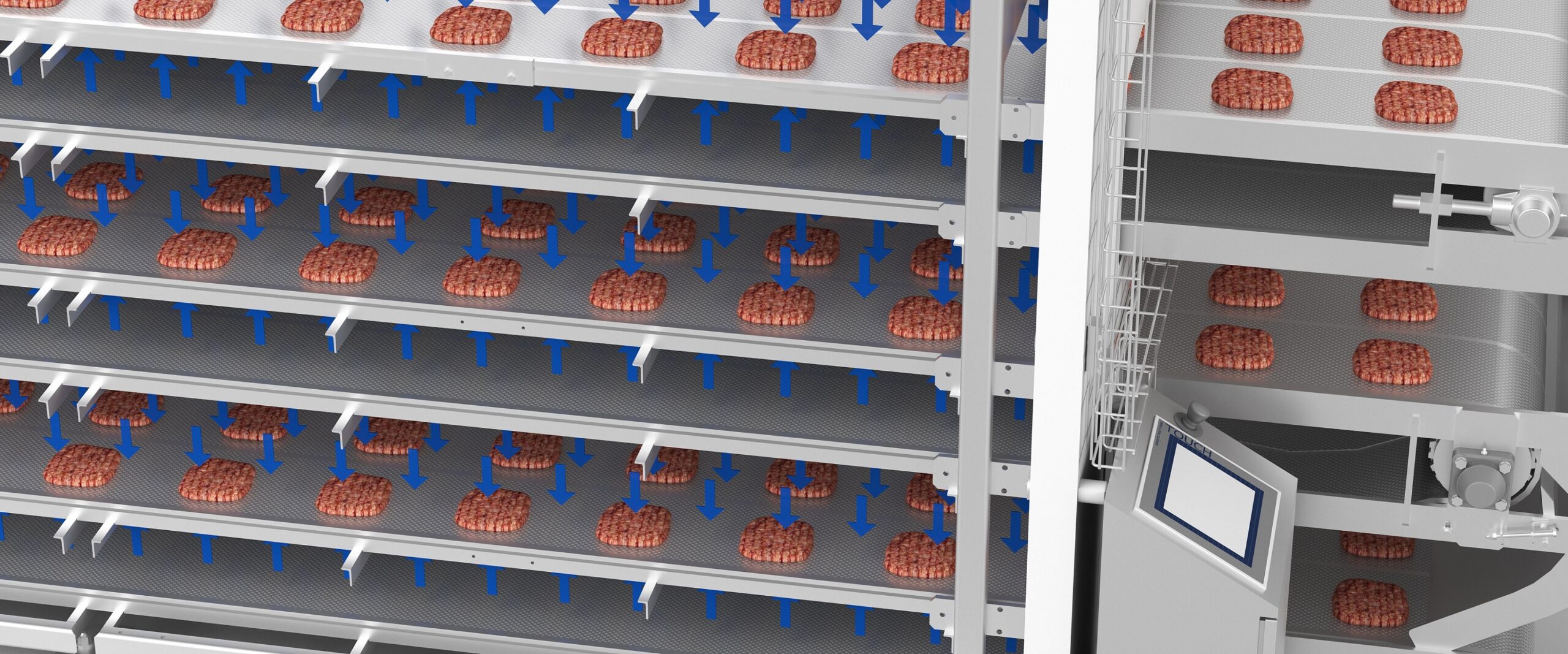
Impingement Freezer
Application: Seafood, meat, poultry, lasagna, ready meals
Impingement Medium: Air
Result: Rapid freezing in a short time without dehydrating the product

